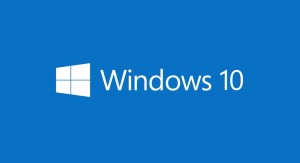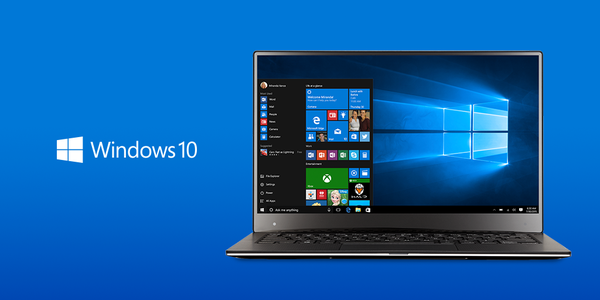 Microsoft's newest incarnation of the now 30-year-old Windows brand was officially released to the computing public last week. Much of the online commentary has focused on user-interface aspects of the new OS, such as the newly redesigned (again!) Start menu, the ability to run the newer-style (Metro/Modern) apps in a window instead of full-screen, and the new virtual assistant known as Cortana. Understandable, since that's what most users will notice and see, and that's where Microsoft received the most Windows 8 criticism.
Microsoft's newest incarnation of the now 30-year-old Windows brand was officially released to the computing public last week. Much of the online commentary has focused on user-interface aspects of the new OS, such as the newly redesigned (again!) Start menu, the ability to run the newer-style (Metro/Modern) apps in a window instead of full-screen, and the new virtual assistant known as Cortana. Understandable, since that's what most users will notice and see, and that's where Microsoft received the most Windows 8 criticism.
As business technology junkies, though, it's hard for us to get too excited about redesigned start menus. Yes, Windows 10 feels more at home than its predecessor in the traditional keyboard and mouse desktop world that most business users still reside in. Microsoft's attempt to bridge the desktop and tablet form factors feels less jarring than Windows 8 did, and that's a good thing. That's about all I'm going to say, however, about the cosmetic facelift you'll see in Windows 10.
Instead, I'll highlight a few things we biztech junkies are excited about - things that will end up having more impact on businesses. Some of these, we've been watching slowly develop and converge for the past several years. What Microsoft is doing, or rather has been doing for a few years, is laying a foundation intended to address needs that almost every business has when they look into cloud computing and how best to serve a decentralized workforce.
- Azure Active Directory Support. If your company has started using Office 365 for email, you're already using Azure Active Directory - it's the cloud version of the on-premises Active Directory service we've all been using for years to authenticate users and computers on corporate domains. Windows 10 support for AD in the cloud will help IT departments secure company computers that aren't connected to the company network. Remote workers "in the field" will be able to have authentication and security policies applied much like their counterparts in the office.
- Windows Hello. Log into Windows without a password, using facial recognition? It may feel gimmicky, and in this first incarnation, maybe it is, but eventually biometrics will become an important enhancement to the now-ubiquitous standard of password-based computer security. Windows 10 Hello is laying the groundwork for that next phase of security. Presumably it would be harder to hack someone's iris than it is to hack their password.
- BitLocker and EFS. While not new at all, these disk- and file-encryption technologies are being given renewed attention, and one or both of them will be enabled by default in Windows 10. This will help protect your files from unauthorized access by someone who may gain access to your PC, or if your notebook is lost or stolen. Turning these on by default should help prevent a lot of data security breaches that result from hackers finding data on lost, stolen, or discarded computers and hard drives.
- Information Rights Management. IRM is not new, and also technically not a feature of Windows 10, so why is it on this list? It's part of the bigger picture - the integrated solution that Microsoft is offering for businesses to share and collaborate across devices and locations, while still maintaining controls and standards, and protecting company information from loss or misuse. With the introduction of Azure Rights Management, a feature built into some tiers of Office 365 and available a la carte as well, coupled with the Azure Active Directory support now built into Windows 10, the Microsoft ecosystem becomes a compelling solution for the modern business.

In this ecosystem it's possible to set limits on who can use and open documents, how and when documents can be used, and to help with the problem of ex-employees taking company data with them when they leave the company. For example, a document might be set to only be able to open on a computer if it's authenticated to the company domain either through the cloud, or the company network. Or allow it to open only after the user authenticates, and if a user leaves the company, they lose the ability to authenticate, which renders the document useless. All of this helps companies make information accessible anywhere it's needed, on any platform, in any location, while protecting the valuable data each company has.
Should I go out and upgrade right now? I probably should have put this at the top of this article. After all, Windows 10 is being offered free, so what's the downside, right? We've been using the previews for a few months now, and we like it. That said, our current stance is that most businesses should wait, at least a little bit. The direct cost of an operating system isn't likely to be the largest factor in an upgrade decision. Despite the improved upgrade process and delivery through Windows Update, this is still an Operating System upgrade, and there will be some incompatibilities and some adjustment, like with any OS upgrade. For example, our management utilities are not fully compatible yet, though we expect an update to those soon.
Any across the board change like this should have some planning and preparation before implementation. There will be some adjustment to the new UI, and there may be some driver updates required after an upgrade. So our current guidance for businesses is this: Windows 10 is likely the eventual destination for most businesses. If you are buying a new PC, you should probably order it with Windows 10. If you're currently on Windows 7 or 8/8.1, you don't need to rush into anything. Give it a few months, let the inevitable bugs get patched, and drivers get updated, and work with us on an upgrade plan if you're anxious to upgrade. There's also no harm in waiting for the next PC refresh cycle to move to Windows 10, either. At home, where you're not relying on the PC as a tool to do your job, it's a different story. For those eager to try the latest and greatest from Microsoft, make a backup of your home PC (you are doing that anyway, aren't you?), and have at it! Requirements are similar to Windows 7/8/8.1, and it's a great way to get comfortable before your business is running Windows 10.
Thanks for reading. Please feel free to direct any of your Windows 10 questions to me, or to your support team.
.wp-post-image{display:none;}

Leave a comment!
You must be logged in to post a comment.